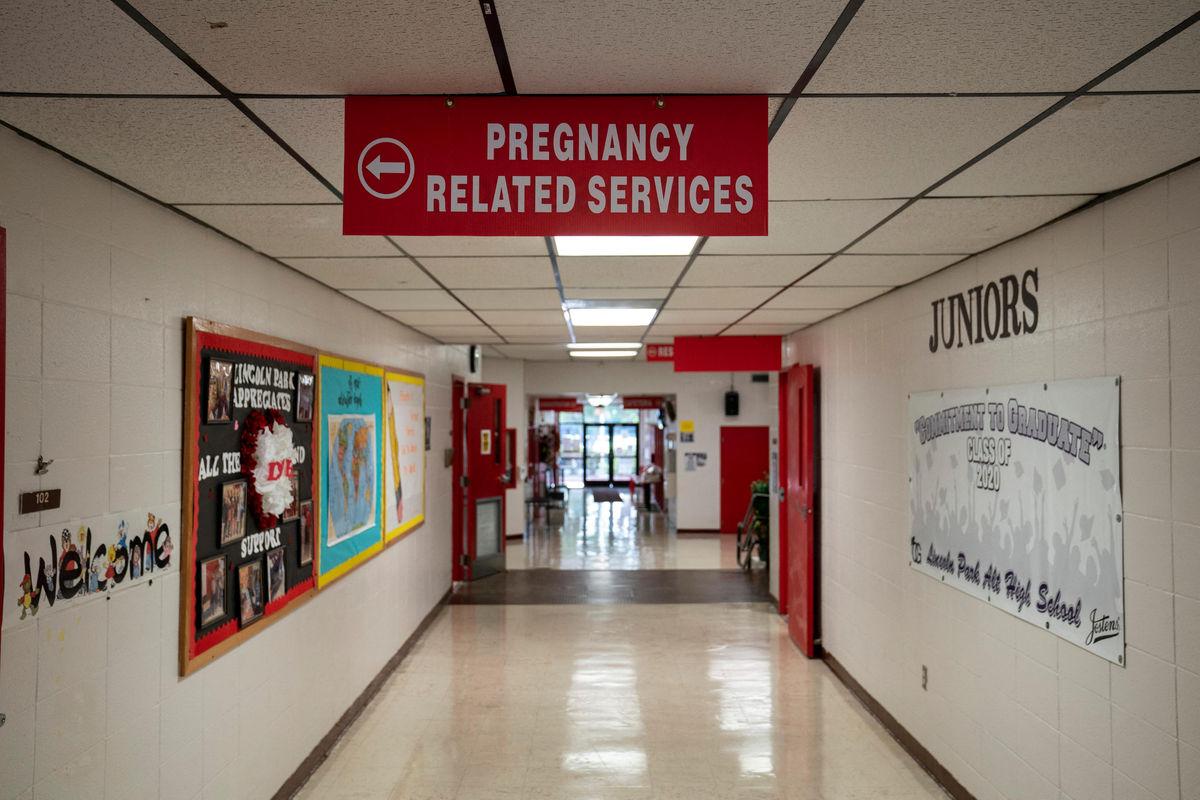Texas school where students bring their babies along
Texas school where students bring their babies along Nation


Teen Mothers in Texas Find Support at Lincoln Park High School

Introduction
Seventeen-year-old Yarezi Alvarado wakes up early to get her backpack ready for school, but she also has to prepare bottles for her one-year-old daughter, Kamila, who rides on the school bus with her. Yarezi is one of the many young mothers attending Lincoln Park High School in Brownsville, Texas, a low-income Hispanic neighborhood near the Mexican border.
Sustainable Development Goals (SDGs)
- Goal 3: Good Health and Well-being
- Goal 4: Quality Education
- Goal 5: Gender Equality
- Goal 10: Reduced Inequalities
- Goal 17: Partnerships for the Goals
Childcare Support for Teen Mothers
- The school provides education and childcare services for girls and women aged 14 to 22 who are pregnant or have recently given birth.
- A childcare center within the school takes care of the infants while the mothers attend classes.
- Mothers can visit the childcare center to nurse their babies whenever necessary.
Knowing that their children are nearby and well-cared for allows the young mothers to focus on their education and future.
Impact of Abortion Ban
Texas is one of several conservative states that have banned abortion since the reversal of the landmark Supreme Court ruling, Roe v Wade. This ban has made childcare an increasingly sensitive issue for young mothers. However, school officials are reluctant to discuss the topic.
Challenges Faced by Teen Mothers
- In Texas, minors require authorization from an adult to access contraceptives, and sex education is not mandatory in schools.
- Teen mothers often face discrimination in their old schools or rejection by family members.
- Inadequate access to healthcare, low levels of education, and low family income contribute to high birth rates among teens and young women.
The Role of Lincoln Park High School
- Established in the 1990s, Lincoln Park High School is one of the few schools in the US that caters specifically to pregnant and parenting teenagers.
- The school understands the challenges faced by its students and provides support such as home visits, state-funded healthcare services, and a specialized nurse on staff.
- The school’s bilingual population, living near the Mexican border, benefits from classes conducted in English.
Empathy and Support from Teachers
- Teachers at Lincoln Park High School show understanding and empathy towards their students’ situations.
- Students who have to stay home after giving birth receive visits from their teachers.
- Teachers provide flexibility and support, allowing students to take power naps or adjust their workload based on their parenting responsibilities.
Encouragement for Teen Mothers
The school encourages teen mothers to continue their education and pursue their dreams:
- 53% of adolescent women who become mothers finish school, compared to 90% of those who are not mothers.
- Teen mothers are urged not to give up and to prioritize their education for a better future.
- Yarezi aspires to be a gynecologist, emphasizing the importance of perseverance for the well-being of both the mother and child.
Conclusion
Lincoln Park High School provides crucial support and resources for teen mothers in Texas, promoting their well-being, education, and future prospects. By addressing the challenges faced by young mothers and offering a nurturing environment, the school contributes to achieving several Sustainable Development Goals, including good health and well-being, quality education, gender equality, reduced inequalities, and partnerships for the goals.
SDGs, Targets, and Indicators
-
SDG 3: Good Health and Well-being
- Target 3.7: By 2030, ensure universal access to sexual and reproductive healthcare services, including for family planning, information and education, and the integration of reproductive health into national strategies and programs.
The article discusses the issue of inadequate access to healthcare, which can contribute to high birth rates among teens and young women. This aligns with SDG 3, which aims to ensure good health and well-being for all. Target 3.7 specifically focuses on universal access to sexual and reproductive healthcare services, which includes family planning and education.
-
SDG 4: Quality Education
- Target 4.1: By 2030, ensure that all girls and boys complete free, equitable, and quality primary and secondary education leading to relevant and effective learning outcomes.
The article highlights the importance of education for adolescent women who become mothers. It mentions that 53% of adolescent women who become mothers finish school, compared to 90% of those who are not mothers. This aligns with SDG 4, which aims to provide quality education for all. Target 4.1 specifically focuses on ensuring that all girls and boys complete free, equitable, and quality primary and secondary education.
-
SDG 5: Gender Equality
- Target 5.6: Ensure universal access to sexual and reproductive health and reproductive rights as agreed in accordance with the Programme of Action of the International Conference on Population and Development and the Beijing Platform for Action and the outcome documents of their review conferences.
The article discusses the challenges faced by young mothers, including discrimination and rejection. This relates to the issue of gender inequality. SDG 5 aims to achieve gender equality and empower all women and girls. Target 5.6 specifically focuses on ensuring universal access to sexual and reproductive health and reproductive rights.
| SDGs | Targets | Indicators |
|---|---|---|
| SDG 3: Good Health and Well-being | Target 3.7: By 2030, ensure universal access to sexual and reproductive healthcare services, including for family planning, information and education, and the integration of reproductive health into national strategies and programs. | Inadequate access to healthcare, low levels of education, and family income contribute to high birth rates among teens and young women. |
| SDG 4: Quality Education | Target 4.1: By 2030, ensure that all girls and boys complete free, equitable, and quality primary and secondary education leading to relevant and effective learning outcomes. | 53% of adolescent women who become mothers finish school, compared to 90% of those who are not mothers. |
| SDG 5: Gender Equality | Target 5.6: Ensure universal access to sexual and reproductive health and reproductive rights as agreed in accordance with the Programme of Action of the International Conference on Population and Development and the Beijing Platform for Action and the outcome documents of their review conferences. | Discrimination and rejection faced by young mothers. |
Behold! This splendid article springs forth from the wellspring of knowledge, shaped by a wondrous proprietary AI technology that delved into a vast ocean of data, illuminating the path towards the Sustainable Development Goals. Remember that all rights are reserved by SDG Investors LLC, empowering us to champion progress together.
Source: nation.africa

Join us, as fellow seekers of change, on a transformative journey at https://sdgtalks.ai/welcome, where you can become a member and actively contribute to shaping a brighter future.







